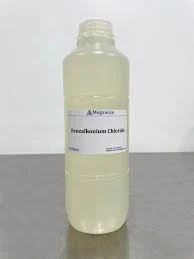Polyaluminum Chloride Water Treatment Solutions
The Role of Polyaluminum Chloride in Water Treatment
Water treatment is an essential process for ensuring the safety and quality of drinking water. Various chemicals are used to enhance the efficiency of water purification systems, and one such compound that has gained prominence in recent years is polyaluminum chloride (PAC). This article explores the properties, advantages, and applications of PAC in water treatment processes.
Polyaluminum chloride is a multiparticulate substance that is formed by the polymerization of aluminum chloride and hydroxide ions. This results in a highly effective coagulant that facilitates the removal of suspended solids, colloids, and microorganisms from water. The primary mechanism by which PAC operates is through coagulation and flocculation—processes that involve the aggregation of particulates into larger clusters that can then be removed more easily from the water.
One of the primary advantages of using PAC in water treatment is its high efficacy at low doses. Compared to traditional coagulants, such as alum (aluminum sulfate), PAC can achieve similar or superior treatment results with less chemical input. This not only reduces the overall chemical costs associated with water treatment but also minimizes the amount of sludge generated during the process. The lower sludge volume is particularly important, as it eases the burden on subsequent treatment and disposal methods.
polyaluminum chloride water treatment

Another significant benefit of PAC is its enhanced performance in a variety of water conditions. Its effectiveness is less sensitive to changes in pH and ionic strength, enabling it to perform well in both acidic and alkaline waters. This versatility makes PAC suitable for treating diverse sources of water, from surface water bodies to wastewater. Moreover, PAC has shown to be effective in removing a broad spectrum of contaminants, including turbidity, heavy metals, and organic materials, which are critical for ensuring safe and potable water.
Furthermore, PAC has been noted for its reduced environmental impact compared to traditional coagulants. Its formulation tends to produce less residual aluminum in treated water, which is beneficial for both human health and aquatic ecosystems. Lower residuals also translate into fewer challenges related to regulatory compliance, making PAC an appealing choice for municipal water treatment facilities.
In practical applications, PAC is utilized by various sectors, including municipal water treatment plants, industrial water facilities, and wastewater treatment providers. Its adaptability allows water treatment operators to optimize their processes, ensuring that water quality meets or exceeds safety standards. Additionally, with the increasing demand for high-quality water amidst growing population and industrial needs, the adoption of innovative treatment solutions like PAC is crucial for sustainable water management.
In conclusion, polyaluminum chloride is a valuable coagulant in the water treatment sector. Its effectiveness at low doses, versatility across different water conditions, and reduced environmental impact make it an attractive option for water treatment facilities. As water quality continues to be a critical public health issue, the ongoing research and development of advanced compounds like PAC will play a vital role in enhancing our ability to provide clean and safe drinking water for future generations.
-
Water Treatment with Flocculant Water TreatmentNewsJun.12,2025
-
Polymaleic AnhydrideNewsJun.12,2025
-
Polyaspartic AcidNewsJun.12,2025
-
Enhance Industrial Processes with IsothiazolinonesNewsJun.12,2025
-
Enhance Industrial Processes with PBTCA SolutionsNewsJun.12,2025
-
Dodecyldimethylbenzylammonium Chloride SolutionsNewsJun.12,2025





